6.4: Methods of Filling Public Offices
- Page ID
- 2014
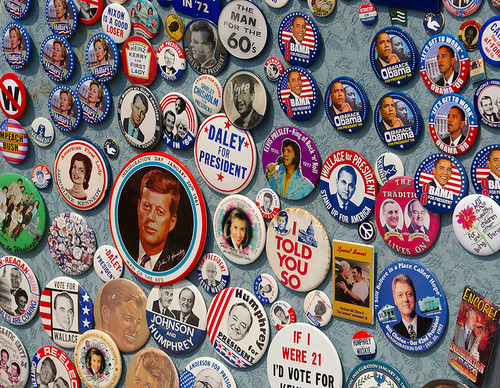
State and Local Elections
State and local elections can take place in any year, at various times throughout the year. There can be statewide elections for governor or state legislature. A city may elect its mayor. There may be races for judges and local officials. Ballot initiatives may be up for a vote.
Congressional Elections and Midterm Elections
Congressional elections determine who represents your state in Congress. Congress is the branch of the federal government that makes laws. It includes the House of Representatives and the Senate. Congressional elections use the popular vote to choose winners. They don't use the Electoral College, which is used in presidential elections.
Midterm elections occur halfway between presidential elections. Voters choose one-third of senators and every member of the House of Representatives. The congressional elections in November 2018 were "midterms."
Midterms determine which party—Democratic or Republican—will control each chamber of Congress for the next two years. The party that controls a chamber usually wins that chamber's legislative votes. Proposed legislation must pass in the House and the Senate for it to reach the president's desk.
U.S. House of Representatives
Members of the U.S. House of Representatives serve two-year terms. All 435 members get elected every midterm and presidential election year. The number of representatives a state has depends on its population. Each representative serves a specific congressional district. A representative must be at least 25, a U.S. citizen for at least seven years, and live in the state he or she represents.
U.S. Senate
Senators serve six-year terms. One-third of senators get elected during each midterm and each presidential election year. There are 100 U.S. senators, two from each state. A senator must be at least 30 years old, a U.S. citizen for at least nine years, and live in the state he or she represents.

Political Campaigns and the Election Process
Campaign managers know that to win an election, they must do two things: reach voters with their candidate’s information and get voters to show up at the polls. To accomplish these goals, candidates and their campaigns will often try to target those most likely to vote. Unfortunately, these voters change from election to election and sometimes from year to year. Primary and caucus voters are different from voters who vote only during presidential general elections. Some years see an increase in younger voters turning out to vote. Elections are unpredictable, and campaigns must adapt to be effective.
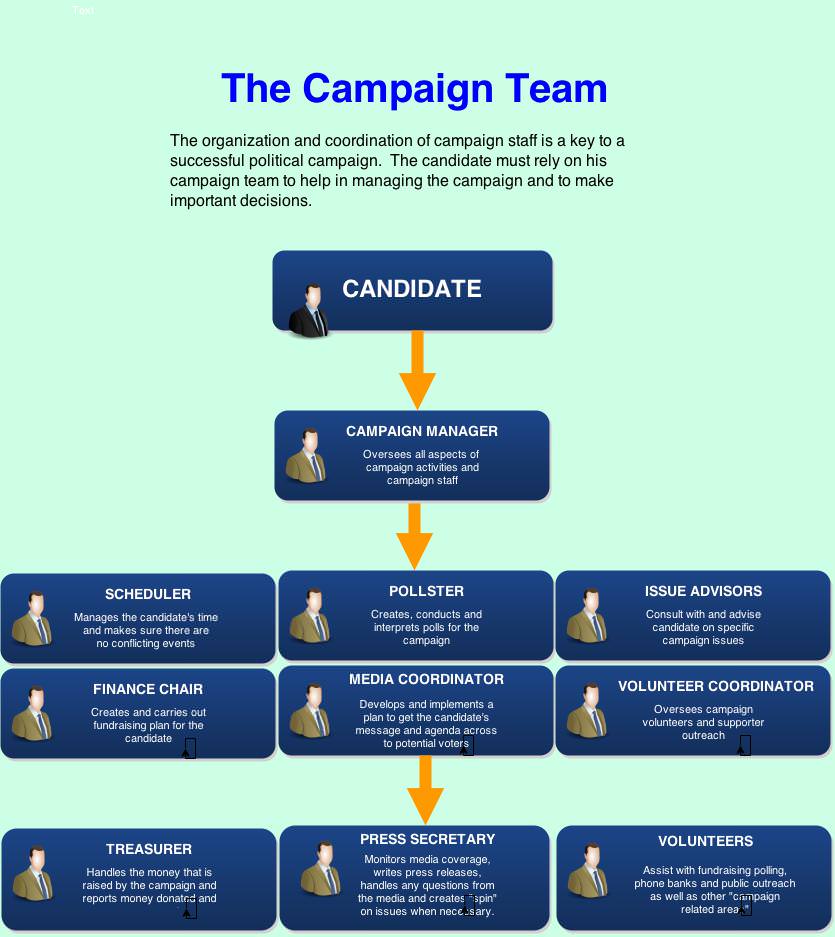
Campaign Organization
It takes the coordinated effort of a staff to run a successful campaign for office. The campaign staff is headed by the campaign manager who oversees personnel, allocates expenditures, and develops a strategy. The political director deals with other politicians, interest groups, and organizations supporting the candidate. The finance director helps the candidate raise funds directly and through a finance committee. The research director is responsible for information supporting the candidate’s position on issues and for research on the opponents’ statements, voting record, and behavior, including any vulnerabilities that can be attacked. The press secretary promotes the candidate to the news media and at the same time works to deflect negative publicity. This entails briefing journalists, issuing press releases, responding to reporters’ questions and requests, and meeting informally with journalists. As online media have proliferated, the campaign press secretary’s job has become more complicated, as it entails managing the information that is disseminated on news websites, such as blogs like the Huffington Post, and social media, such as Facebook. Campaigns also have consultants responsible for media strategy, specialists on political advertising, and speech writers.
Pollsters are essential because campaigning without polls is like "flying without benefit of a radar." 1] Polls conducted by campaigns, not to be confused with the media's polls, can identify the types of people who support or oppose the candidate and those who are undecided. They can reveal what people know and feel about the candidates, the issues that concern them, and the most effective appeals to win their votes. Tracking polls measure shifts in public opinion, sometimes daily, in response to news stories and events. They test the effectiveness of the campaign's message, including candidates advertisements.
ABC News Video: Pollsters Getting it Wrong: Other Ways to Predict Election
Focus Groups
Campaigns convene focus groups consisting of voters who share their views about candidates and the election in order to guide strategic decisions. Focus groups bring together a few people that are representative of the general public or of particular groups, such as undecided voters, to find out their reactions to such things as the candidate's stump speech delivered at campaign rallies, debate performance, and campaign ads.
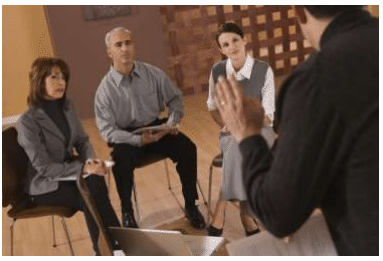
The Media Coordinator is the person responsible for getting the candidate’s message and political agenda out to the greatest number of potential supporters in the most efficient and effective way possible. It is the media coordinator who also handles the purchase and scheduling of paid advertising for the candidate as well as coordinating social media efforts (web sites, Twitter, Facebook, etc.) and making sure the candidate has a presence at as many free public media opportunities as possible. Additional activities might include speeches, public debates and community forums, rallies, and nonpolitical events that the candidate might attend as his/her schedule permits.
The Scheduler manages the time demands on the candidate by ensuring he/she is properly scheduled to attend public events and that invitations for public appearances do not interfere or conflict with each other. In addition, it is the job of the scheduler to make sure that time commitments are used in a manner that most effectively allows the candidate to make contact with the voting public and get his/her message across to the greatest number of potential supporters. It is also the job of the scheduler to work with the media coordinator to make sure the public appearances of the candidate are properly covered by news media and the press (newspapers) to get wide coverage of each event in the candidate’s schedule.
Campaign Volunteers - No campaign would work without grassroots volunteers who help in canvassing neighborhoods, putting up signs, manning volunteer phone banks, helping with exit polls, handing out leaflets, and providing a face of public support at rallies and other media events.
Issue Advisors are experts in policy areas that advise the candidate on complex issues that may arise during the campaign. Their main function is to make sure the candidate is knowledgeable on a variety of issue topics that may be raised by the public, the media, and the opposition during the campaign. In general, the candidate is provided with written “position statements” on the issues that may be placed into campaign speeches and referred to as questions or concerns arise. They are particularly important in preparing candidates for formal debates and public Q&A forums where issues tend to be the focus.
Campaign Strategies
After deciding to run for office, the first questions that often arise from the staff are how many votes must we gain in order to win the election and where can the candidate find those votes? These then become the focus of most campaign strategies and will be used to guide the entire campaign process. Who the candidate reaches out to for support, what types of events he/she attends, whether or not to publically debate (and with whom), what type of media to utilize (TV, print, Internet) and how the message will be constructed and delivered will all be determined by the campaign strategy.
Identifying Supporters Many candidates will use polls and pollsters to find the greatest sources of public support. This information then helps determine what issues will be discussed, what type of message to deliver, and who the message will be targeted to. The polling information also determines how campaign funds will be raised and spent, where the candidate will visit during the campaign, how long the candidate will stay on the campaign trail, and a variety of other logistical issues. Political scholars do know that campaigns have a minimal effect in changing the minds of voters. Instead, campaigns need to concentrate on getting the votes of people who are acknowledged supporters of the candidates or feel that they are undecided.
Message Targeting Using such tools as polls and target groups, the campaign needs to determine the issues that potential supporters feel are most salient (important to them). This information is then used to construct a campaign message that can be converted into brief 30-second “sound bites” which the media often covers. Even the most complex of campaign messages needs to be made simple and easy to understand in order to be effective.
Selling the Candidate
Today, many critics question the value of modern campaigns. Many campaign organizations routinely bring in experts who manage a candidate’s image, message, and media coverage into a “package” that can be marketed like any other product in a store. One of the best examples is the “packaging” of John F. Kennedy into a sleek, media-savvy product. His political “handlers” were able to market the young and handsome candidate as a family man with a beautiful wife and two adorable children. This made it easier to present the Kennedy ticket as a desirable product in comparison to Richard Nixon and the Republican ticket.
Consider the famous debate between John F. Kennedy and Richard Nixon. When Nixon began to sweat under the lights of the studio, the audience on television began to perceive Nixon as untrustworthy even though most policy experts and debate analysts saw Nixon as the clear winner in debating the issues.
After the overall campaign strategy has been determined, it becomes the task of the campaign team to implement the strategy and conduct an organized and well-planned campaign. This phase requires the candidate to go on “the campaign trail” in order to make personal appearances in a way that will gain optimal attention and reach the greatest number of potential supporters. Of course personal visits and “whistle stop” strategies are not as necessary today as they once were with the ability to reach and communicate with people over the Internet, social media, and focused Satellite and TV media.
It is also important that the candidate avoids “preaching to the choir” by speaking only with people who have decided to support the candidate already. At this point, the emphasis will be on identifying and reaching voters who live in “swing states” or “swing districts” that may be influenced to vote for the candidate. “swing states” and “swing districts” are areas that the political pollsters and statisticians have determined to be “up for grabs” because they have not yet exhibited solid support for either candidate.
Addressing the Issues and Stumping
All along the campaign, the candidates will make public appearances, deliver targeted speeches, and participate in political debates surrounding important issues. Most candidates will have a pre-prepared standard “stump speech” that they deliver just about everywhere they go. This speech will present the candidate’s campaign platform and his/her stance on issues important to the candidate. It will also contain pre-prepared responses or defenses against issues or questions raised by the candidate’s opposition during the campaign process.
But beyond the standard message, a series of issue-specific messages and responses are generally prepared in ways that can be presented as “30-second sound bites” or converted into campaign slogans that will appear on bumper stickers, signs, banners, etc.
As an example, in the 1960 campaign, Kennedy chose slogans like “Leadership for the 60s”, and “Leadership we need” while the Nixon ticket chose “They understand what peace demands.” What both of these slogans have in common is their intent to give the voters a simplified reason to choose the candidate.
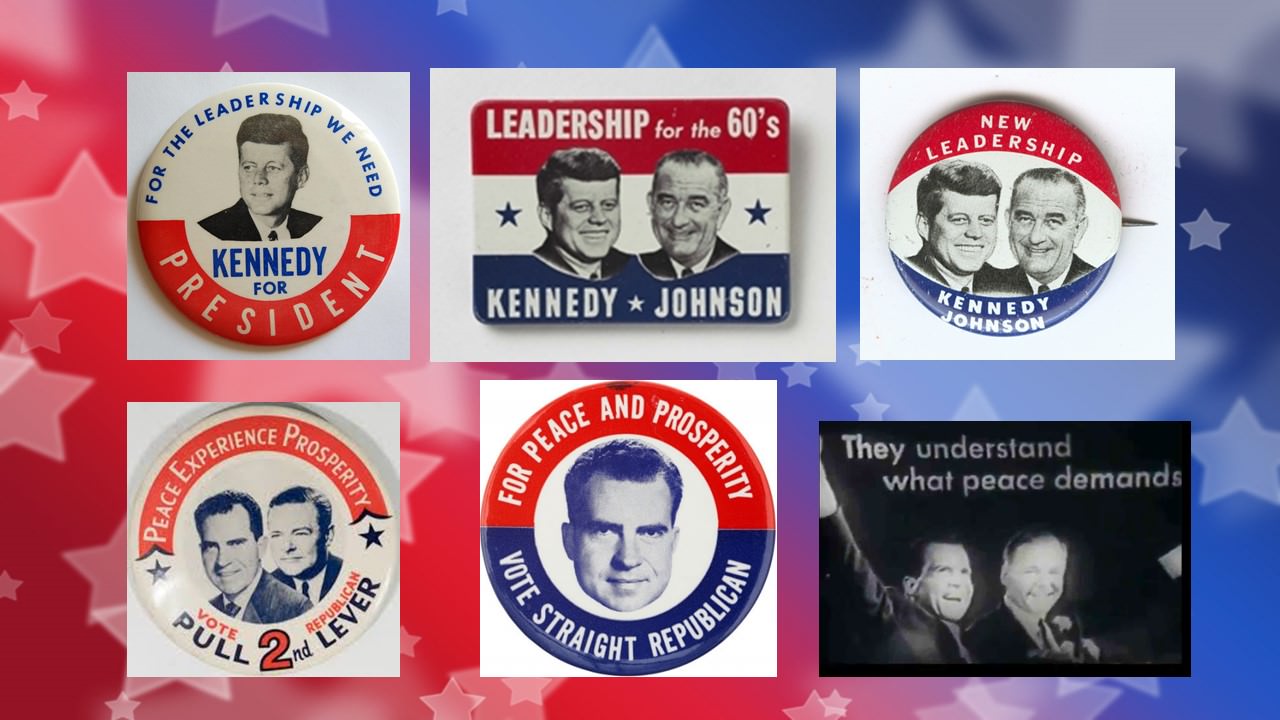
Negative Campaigning
One of the most popular trends in recent political campaigns has been the use of negative campaign tactics. With the increased availability of and access to social media, we all leave a digital footprint that remains for years to come. This digital footprint has become an easy target for negative campaigning (often referred to as “mud-slinging”).
While negative campaigning tactics have been around since the beginnings of our nation, new technologies and the need to break messages into “sound bites” that can be delivered in conveniently packaged products has caused politicians to refer to this type of political tactic much more frequently. This is because it is much easier and more efficient to deliver a 30-second negative campaign message to the public than hours of political debate and speech making.
From the perspective of the press, “sex sells” and “if it bleeds it leads” tend to be the rule of thumb. But some political theorists believe the overuse of negative campaigning will have an impact on the trend and that politicians will eventually return to more issue-centered campaign messages.
Video: The Importance of the Media
Using demographic information about the pool of potential voters who might support the candidate, the media and campaign managers will determine what type of media campaign to prepare. This may include a mixture of billboards, fliers, TV and radio ads, and Internet/social media strategies. For instance, a Congressional district with a number of older voters may require the use of print (newspaper), television and radio advertising whereas a district with a younger voter population might require the use of social media, targeted satellite and cable advertising, and other more “trendy” strategies.
Broadcast Media
Video: Political Advertising Over Time
EVALUATING POLITICAL ADVERTISEMENTS
Watch the video above and answer the questions below:
1. How have political ads changed over the past 50 years?
2. Which of these ads would you classify as portraying a positive message? Explain.
3. Which of these ads would you classify as portraying a negative message? Explain.
4. Which type of ads do you see as being more effective (positive or negative)? Why?
5. Do you think television advertisements will still play a major role in conducting a political campaign or do you think the Internet and social media will replace it entirely in the future?
6. How would these ads be different if they were prepared for delivery on the Internet or social media?
Since television has traditionally been the primary medium of information for most voters since the 1950s, most campaigns will place as much of their available resources into TV ads as they can afford. But paid advertising is not the only way that candidates use TV media. The candidate will try to place him/herself in as many public “media opportunities” as possible in order to receive free television exposure.
Media directors will try to get their candidates on as many debates, talk shows, news programs, etc. as possible. Today, cable television shows like the Daily Show and the Colbert Show have become major sources of news and current event exposure and have been targeted by a great number of candidates.
The bottom line strategy for broadcast media is to get as much exposure on as many channels or networks as possible to reach the broadest spectrum of potential voters possible for the least amount of money. We have become accustomed lately to seeing candidates (like Barack Obama) make talk show appearances on broadcast television, but when Richard Nixon appeared on the television show “Laugh In” in 1968 it was unheard of. Richard Nixon famously said only four words – “Sock it to me?”
In another famous media event, Presidential Candidate Bill Clinton appeared on the Arsenio Hall television show in the late 1990s.
Video: Bill Clinton on Arsenio Hall Show
These two examples occurred when using commercial television shows for political gain was rather unheard of, but now it has become an expected and anticipated part of the campaign process.
Radio
Probably the least effective broadcast media today is radio. Most experts have determined that radio is effective in reaching voters in the age group 30-64 and only a limited number of those will actually respond to radio advertising. Social media and Internet has been much more successful than radio in reaching even this audience and at a much cheaper cost, so the use of radio as a media for political advertising has been on a steady decline. One exception to this trend may be in the area of local elections where radio still has a more localized impact.

Print Media
Newspapers and magazines have traditionally been effective ways of reaching voters over the age of 50, but recent technological developments meant the cost-effectiveness of print advertising has been much less than that of the Internet and social media campaigns, so it can be anticipated that print media will play a much less important role in campaign advertising.

Internet and Social Media
Recently candidates have come to realize the increasing importance and power of the Internet and social media campaign strategies. Political blogs, online newspapers and magazines, and social networks such as Twitter and Facebook provide a much less expensive way of delivering targeted messages to a broader audience without the “noise” and expense of traditional mass media (like television and radio). However, we must remember that the commercial and public use of the Internet is only around 30 years old, so the audience that it reaches tends to be younger and more technologically savvy. In addition, the audience that uses the Internet tends to be more educated, more thoughtful and has a higher percentage of professionals.
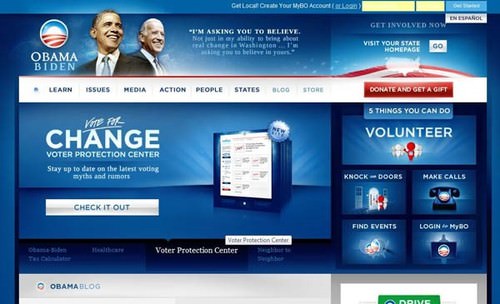
Video: Role of Social Media in Politics
Today, it is expected that any candidate (local, state or national) should have at least a web site with an outline of their platform and the ability to directly connect to potential voters. Many candidates also create personal “blogs” that can disperse specifically targeted messages in a greater amount of detail than could be done through speeches, debates, or the use of traditional mass media advertising.
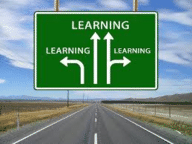
Study/Discussion Questions
- Why is the campaign staff often called the "team"? What does this say about the campaign process?
- What are the major staff positions on the campaign team? How do they each contribute to the campaign?
- What is a campaign strategy and why is it important to have one?
- What is the campaign platform? How is the campaign platform communicated to the voting public?
- What type of voters does a good campaign strategy concentrate on? Why?
- What is a demographic? What is the role of demographics and polling in conducting an effective election campaign?
- Why do many candidates choose to use negative campaign strategies? If you were a campaign manager, under what circumstances would you recommend such a strategy? What are the hazards of using negative campaign strategies?
- Do you think television advertising has had a positive or negative impact on political campaigns?
- Under what circumstances would you emphasize television, radio and print advertising for a candidate? Explain your answer.
- Under what circumstances would you emphasize the use of the Internet and social media to promote a candidate? Explain your answer.
Sources:
American Government and Politics in the Information Age: “Chapter 11: Campaigns and Elections"; http://www.saylor.org/courses/polsc232. Accessed March 17, 2015. License: CC BY-3.0
Fraga, Luis Ricardo. "Understanding Elections: Election Campaigns." United States Government: Principles in Practice. Austin: Holt McDougal, 2012. 353-363. Print.

